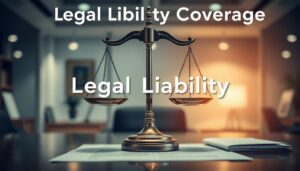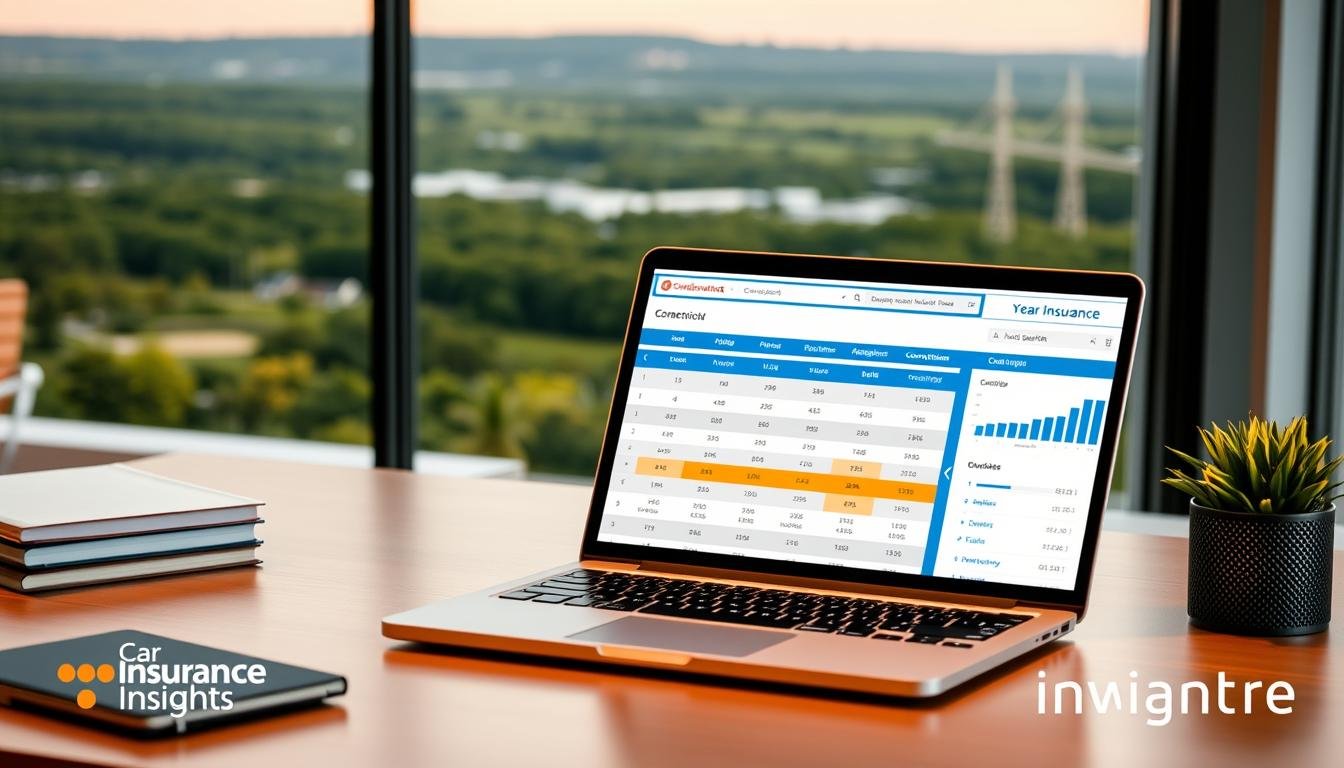In today’s intricate business landscape, protecting your company from financial pitfalls is crucial. One key element of this protection is legal liability coverage form, and understanding the coverage forms tied to this insurance is vital. These forms detail the extent of your coverage and set clear boundaries on what your insurance will and won’t protect. However, interpreting these forms can often be challenging. In this article, we’ll provide a detailed breakdown of legal liability coverage forms, emphasizing their importance, key features, and different types.
Key Insights:
- Legal liability coverage forms play an essential role in shielding businesses from financial losses due to lawsuits or claims.
- A thorough understanding of these forms enables businesses to make more informed decisions about their insurance needs.
- Delving into different coverage types, key form components, and the distinction between claims-made and occurrence policies can offer valuable clarity.
- Mastering the legal language within these forms is crucial for effective risk management.
- Staying current with endorsements and modifications ensures that your policy provides comprehensive protection for your business.
Table of Contents
An Overview of Legal Liability Coverage
Legal liability insurance is a fundamental layer of protection for businesses. It covers costs that may arise from claims or lawsuits where a company is found liable for damages or injuries to third parties. Whether due to accidents, errors, or negligence, these situations can lead to significant financial burdens, which this type of insurance is designed to mitigate. However, understanding exactly what is covered requires careful reading and interpretation of the legal liability coverage forms attached to your insurance policy.
What Are Legal Liability Coverage Forms?
A legal liability coverage form is a detailed document that outlines the parameters of an insurance policy. It specifies what the policy covers, the conditions under which the coverage applies, and the limits of liability. This form acts as a contract between the insurer and the policyholder, ensuring that both parties are clear about their obligations and expectations. The form also provides guidelines on claims processing, coverage limits, and exclusions, making it an essential document for businesses seeking to protect their assets.
Why It’s Important to Understand Coverage Forms
Businesses must have a deep understanding of their liability coverage forms to avoid any surprises when a claim is made. Comprehensive knowledge allows business owners to tailor their insurance policies to their specific needs, address any potential gaps in coverage, and better manage their risk. Additionally, knowing what your policy covers helps you stay compliant with industry regulations and make smarter, more strategic decisions when it comes to selecting and managing your insurance.
Types of Legal Liability Coverage Forms
The type of coverage a business needs depends on the nature of its operations, and there are multiple forms of legal liability insurance to choose from. Let’s explore some of the most common options:
- General Liability Insurance
This coverage protects businesses from a wide range of claims, including bodily injury, property damage, and personal/advertising injury. It’s a core coverage for many businesses, large and small. - Professional Liability Insurance (Errors & Omissions, or E&O)
Designed for businesses providing professional services, this insurance covers claims related to errors, omissions, or negligence in the services provided. - Product Liability Insurance
Manufacturers, distributors, and retailers often carry this form of coverage to protect against claims related to harm or damage caused by products they produce or sell. - Cyber Liability Insurance
In the digital age, this coverage is critical for protecting against data breaches, cyberattacks, and other digital threats that can compromise sensitive information.
Each of these forms addresses different risks and liabilities, so it’s important to select the one—or combination—that best suits your business needs.
Breaking Down the Legal Liability Coverage Form
A legal liability coverage form is a critical tool for managing your company’s exposure to legal claims. The form is broken down into several key components, each of which plays a specific role in outlining the scope and limitations of the coverage:
- Insuring Agreement:
This section defines what the policy will cover, detailing the incidents, damages, or claims that the insurance company will compensate. - Exclusions:
Here, the form lists situations or conditions that are not covered under the policy. Common exclusions might include intentional harm, criminal acts, or certain high-risk activities. - Definitions:
The definitions section clarifies the meaning of important terms used throughout the coverage form, ensuring that both the insurer and the policyholder have a common understanding of the language used in the policy.
Understanding these components is crucial for interpreting your liability coverage. By knowing the insuring agreement, exclusions, and definitions, you can assess the adequacy of your coverage and ensure it aligns with your business’s risk profile.
Policy Limits and Deductibles
The financial limits of your coverage are also defined within the legal liability coverage form. These limits determine the maximum amount an insurer will pay for a claim and are categorized into two main types:
- Per-Occurrence Limits:
This defines the maximum amount payable for a single incident covered under the policy. - Aggregate Limits:
This is the total amount the insurer will pay over the course of the policy period for all claims combined.
In addition, most policies also have deductibles or self-insured retentions. These are the amounts the policyholder must pay out-of-pocket before the insurance kicks in. Understanding the interplay between policy limits, deductibles, and self-insured retentions is critical for managing your business’s financial exposure to claims.
Claims-Made vs. Occurrence Coverage Forms
When choosing a legal liability policy, it’s important to understand whether you are purchasing a claims-made or occurrence policy. The distinction lies in when the coverage applies.
- Claims-Made Policies
Cover claims made during the active policy period, regardless of when the incident occurred. If the policy expires or is not renewed, any claims made after the fact won’t be covered unless you have purchased additional coverage known as “tail coverage.” - Occurrence Policies
Cover incidents that occur during the policy period, regardless of when the claim is filed. Even if a claim is brought years after the policy has expired, the policyholder is still covered for incidents that took place while the policy was active.
Choosing between these two options depends on your business’s long-term risk profile and how you anticipate claims might arise.
Endorsements and Modifications: Tailoring Your Policy
Legal liability coverage forms can be customized to suit the specific needs of your business through endorsements and modifications. These adjustments allow you to enhance your coverage or limit your liability based on unique risks your company may face.
Some common endorsements include:
- Additional Insured Endorsements – Extend coverage to other parties, such as contractors or vendors.
- Waiver of Subrogation Endorsements – Prevent your insurer from seeking reimbursement from a third party after paying a claim.
- Cyber Liability Endorsements – Offer protection against the financial impacts of data breaches and other cyber threats.
These endorsements allow businesses to tailor their liability insurance, ensuring that the coverage meets their specific risk needs.
Interpreting Coverage Forms and Legal Language
Reading and understanding a legal liability coverage form can be overwhelming, as the legal jargon used can be complex. It’s essential to have a solid grasp of the terminology to fully understand your policy’s protections and limitations. Critical terms such as “insuring agreement,” “exclusions,” and “policy limits” should be carefully reviewed to ensure you comprehend their implications. When in doubt, consulting with a legal or insurance expert can help clarify any confusing language and make sure your business is fully protected.
Frequently Asked Questions
1. What is a legal liability coverage form?
A legal liability coverage form is the document within an insurance policy that outlines the protection against financial risks related to legal claims and lawsuits.
2. Why should businesses understand these forms?
Understanding legal liability coverage forms helps businesses ensure that their insurance policy meets their specific needs and that there are no gaps in coverage.
3. What are the different types of coverage forms?
Common types include general liability, professional liability, product liability, and cyber liability insurance.
4. What are the key components of a coverage form?
The main components are the insuring agreement, exclusions, and definitions.
5. How do policy limits and deductibles work?
Policy limits set the maximum payout for a claim, while deductibles and self-insured retentions are the amounts a business must pay before insurance kicks in.
6. What’s the difference between claims-made and occurrence policies?
Claims-made policies cover claims made during the policy period, while occurrence policies cover incidents that happened during the policy period, even if claims are made later.
7. How can endorsements modify a policy?
Endorsements customize the policy by adding or modifying coverage to address specific business risks.
Understanding and navigating legal liability coverage forms is critical to ensuring your business has the right protection against potential legal claims.







